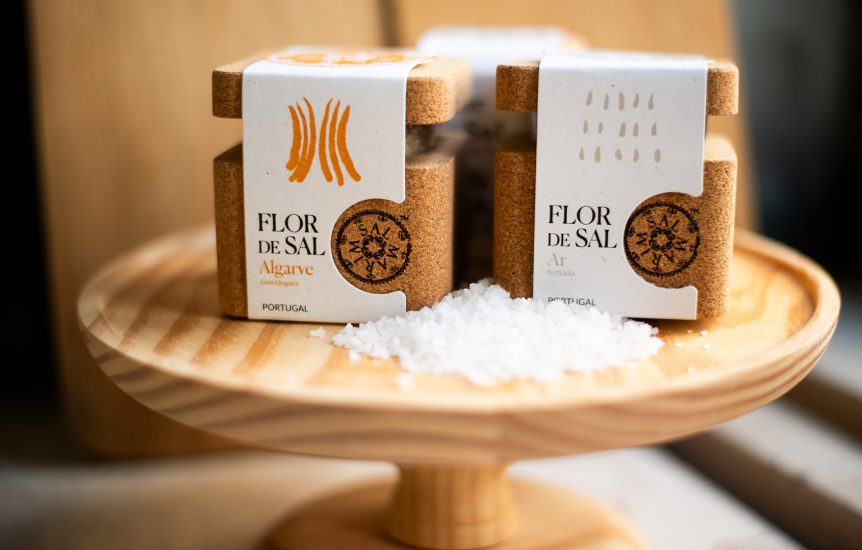- No products in the cart.
Salt is not just a seasoning; it is one of human history’s oldest and most essential ingredients. Its significance dates back to refrigeration, making it crucial for preserving food. In many civilisations, salt was even used as currency. The word “salary” originates from salt, highlighting the immense value this resource has held over centuries.
As the only edible rock, salt transcends all cultures and cuisines, playing an irreplaceable role in gastronomy by enhancing the flavours of food. In the Algarve, the tradition of salt pans runs deep, and even today, brands like Salmarim from Castro Marim uphold the authenticity and quality of handcrafted sea salt, keeping a centuries-old heritage alive.
In the Algarve, the legacy of salt production stretches back over two thousand years, with the earliest records dating to the Phoenician era and later being consolidated during the Roman occupation. During this period, salt production reached remarkable levels, playing a key role in fish conservation and the making of the renowned garum. Archaeological remains, including salting tanks and extraction structures, can still be found in various coastal locations, particularly in Castro Marim, Tavira, and Olhão, highlighting the historical significance of this practice.
The salt pans of the Algarve and other regions continued to thrive, serving as a vital source of income for Portugal. In the 16th century, with the era of maritime expansion, salt became an extremely valuable commodity, essential for preserving cod and other fish, driving trade with northern European countries.
Today, traditional salt pans, such as those in Castro Marim and Tavira, continue to uphold artisanal methods that enhance the quality of sea salt and fleur de sel, earning recognition both nationally and internationally. The salt pan tradition of the Algarve is not merely a relic of the past; it remains very much alive, preserving a millennia-old heritage and enriching our culinary traditions.
What is fleur de sel?
Fleur de sel is a delicate crystal that forms on the surface of the upper layers of salt pans. It is a rare and valuable variety of salt whose collection requires ideal conditions such as sun, wind, heat, and humidity. Rich in minerals and natural nutrients, this salt is used primarily to finish dishes, unlike regular salt. The extraction is done manually, using only spatulas to remove the top layer. France was a pioneer in collecting this crystal, which is why the name Fleur de Sel is still used in countries like England, Germany, and the Netherlands.
A Dash of Salmarim in the Algarve
Salmarim’s salt comes from what is believed to be one of the oldest salt pans in Castro Marim, dating back to the Phoenician era. The business is now run by the family of Jorge Raiado, who once supplied the canning industry. Today, they focus entirely on salt, elevating it to a gourmet product that meets the growing demand for high-quality ingredients.
The commitment to ensuring a product of excellence goes beyond the salt itself. The carefully designed packaging guarantees durability and quality, standing out on any shelf. Created by Portuguese artists, the packaging received an international design award at the 2023 Red Dot Design Awards for being made exclusively from national materials. The exterior features cork, encasing a recycled glass jar that supports the glassmaking industry. Completing the set is a handcrafted wooden spoon, sculpted from reclaimed wood.
Each jar contains carefully refined combinations developed over time. Among the available options is the Fogo range, which blends fleur de sel with chilli, the Violeta, combining fleur de sel with violets and dried fig, the Algarve, featuring fleur de sel and tangerine, and the Coração, which mixes fleur de sel with Douro oxheart tomato.
In Mar d’Estórias, we discover these and many other stories that transport us to the heart of the Algarve, where the sea and the land provide simple ingredients, which are then transformed into unique flavours.

